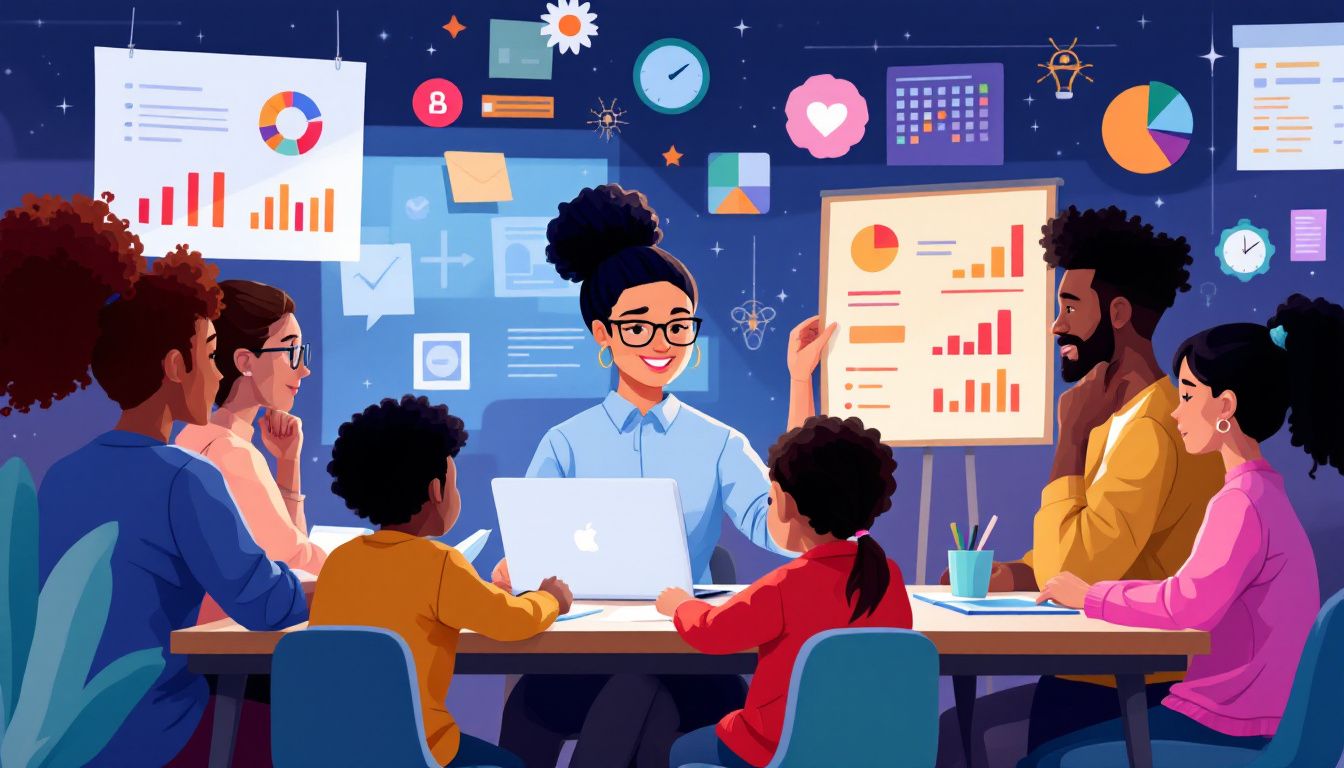Listen to a discussion about this blog
by VOISS / iKnow | Created Using NotebookLM
Individualized Education Plans (IEPs) are the cornerstone of special education, carefully crafted blueprints that ensure every student’s unique needs are met. But let’s be honest—bringing those plans to life in a meaningful, engaging way? That’s a challenge. Enter VOISS Advisor, where virtual reality (VR) is not just a tech trend but a groundbreaking tool for tailoring IEP goals and fostering success in real-world social situations.
The Perfect Match: VOISS and IEPs
VOISS Advisor is designed with IEP integration in mind, making it the ultimate ally for educators. Here’s how it works:
Customizable Lesson Plans: With VOISS Advisor, teachers can align VR scenarios with specific IEP goals. For instance, a student learning to identify personal space boundaries can practice in a simulated classroom, hallway, or cafeteria environment.
Progress Monitoring: Data collected from VR sessions in the VOISS App can feed directly into IEP evaluations. Teachers track skill acquisition, mastery, and generalization across settings, ensuring data-driven decision-making.
Evidence-Based Practices: From role-playing to contrived mediating stimuli, VOISS incorporates strategies proven to promote generalization, which is critical for turning IEP objectives into functional, real-world skills.
As Carreon et al. note in their 2023 article, “Integrating technology into IEP implementation enhances not only the delivery of instruction but also the ability to measure progress effectively, ensuring that interventions are grounded in reliable data.”
Why Virtual Reality Works for IEP Goals
VR creates a safe, controlled environment for students to practice social skills. Here’s why this matters:
Low-Risk Practice: Mistakes are learning opportunities without real-world repercussions.
Multiple Contexts: Students navigate various settings, helping them generalize skills across environments.
Immediate Feedback: In VR, students receive instant, specific feedback to refine their responses.
Imagine a student practicing conflict resolution in a busy school cafeteria, with VR guiding them through appropriate responses. Now imagine that skill transferring seamlessly to their next real-life interaction.
Carreon et. al highlights this benefit, explaining, “Technology like virtual reality empowers students to rehearse critical skills repeatedly, building confidence and reducing anxiety when similar situations arise in real-world contexts.”
Making IEP Implementation Easier for Educators
With VOISS Advisor, educators no longer have to reinvent the wheel for every student’s IEP. Here’s how it streamlines the process:
Ready-to-Use Resources: The platform offers pre-built lesson plans aligned with common IEP goals, such as improving communication, handling peer conflict, or managing transitions.
Flexibility and Adaptation: Educators can modify lessons based on a student’s pace, ensuring growth without overwhelming them.
Collaboration Across Teams: VOISS tools facilitate collaboration among paraprofessionals, related service providers, and parents in achieving IEP goals.
To access the IEP goals, users need to visit the VOISS Advisor website and then select the IEP Goals link from the Navigation Bar. There, users will find an extensive pdf that offers a list of the social skill areas of need and associated goals and benchmarks for one to consider for their own students with similar challenges and/or revise and edit based on the needs of your learner. Developed and reviewed by a team of social skill experts and classroom teachers focused on supporting students with social skill deficits, the IEP Goal list is free to use and apply for anyone’s classroom needs.

Real-Life Application: A Case in Point
Take the VOISS Advisor sample lesson of Marcus, a seventh grader whose IEP goal focuses on responding appropriately to teasing. With VOISS, Marcus practices recognizing teasing versus joking in a virtual hallway. Guided feedback helps him refine his responses. Over time, Marcus demonstrates improvement not just in VR but also in interactions with peers in gym class and the lunchroom. His progress data, collected via VOISS, serves as evidence for IEP reviews and updates.
Take the VOISS Advisor sample lesson of Marcus, a seventh grader whose IEP goal focuses on responding appropriately to teasing. With VOISS, Marcus practices recognizing teasing versus joking in a virtual hallway. Guided feedback helps him refine his responses. Over time, Marcus demonstrates improvement not just in VR but also in interactions with peers in gym class and the lunchroom. His progress data, collected via VOISS, serves as evidence for IEP reviews and updates.
The Big Picture: VOISS Advisor’s Impact on Special Education
When VR meets IEPs, the possibilities are transformative:
Students gain the confidence to navigate social challenges.
Educators gain tools to teach with precision and measure success effectively.
Families gain peace of mind, knowing their child’s goals are supported by cutting-edge resources.
Citation
Carreon, A., Criss, C., & Mosher, M. (2024). Classroom Virtual Reality for Students With Disabilities: A Preliminary Guide to Available Virtual Content. Journal of Special Education Technology, 39(1), 143-150. https://doi.org/10.1177/01626434231170593

